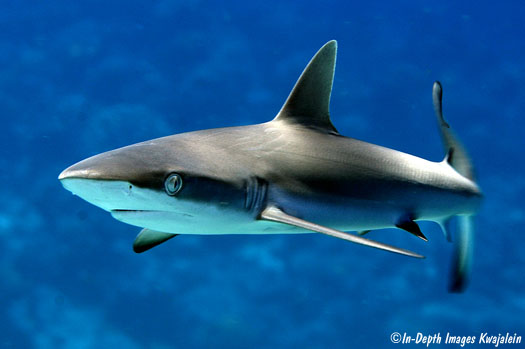
These are some of the most common sharks sighted at Kwajalein, particularly on the seaward reef and on lagoon pinnacles at some distance from Kwajalein Island at the southern tip of the atoll. In the areas frequented by Kwaj divers, there are usually few to be seen. We are not sure if the boating and diving activity at this end of the atoll has caused these territorial sharks to gradually move out of the area, or if they have simply become so accustomed to divers that they no longer come around to investigate. But if you get outside normally trafficked areas, these ruffians are usually the first to show up, often coming up to investigate your anchored boat before divers even get into the water. These are somewhat erratically territorial, although not really defending a particular territory nor defending a personal space. Most of the individuals you see behave calmly, perhaps coming in close to investigate divers but swimming slowly and smoothly. Under some circumstances, however, they may become territorially aggressive. This is indicated by a particular swimming behavior where the shark points its pectoral fins more downward than usual, arches its back but also brings its snout upward, and swims in an exaggerated S-shaped swimming behavior, sometimes hardly making any forward progress. This swimming behavior is commonly referred to as "posturing." Gray reefs posturing are just like wound-up springs, capable of popping off at any moment. In these cases, inadventent actions by the diver could trigger an attack. Acting aggressively toward a posturing gray reef is not a wise thing to do, and I am personally aware of cases where simply banging on one's tank or taking a flash photograph was enough to trigger an attack. Maximum size of gray reefs is usually about 2m long. Gray reefs reported at 7 or 8 feet are nearly always exaggerated or cases of mistaken identity. A gray shark present but rare at Kwaj is the Galapagos gray, which looks somewhat similar to gray reefs but is usually larger and lacks the black trailing edge to the tail.

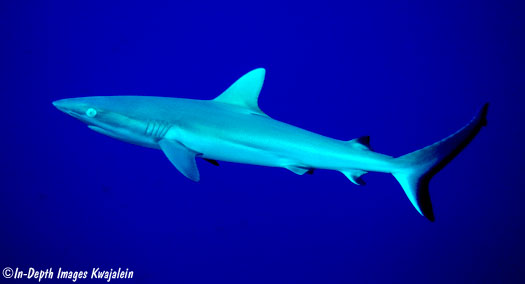
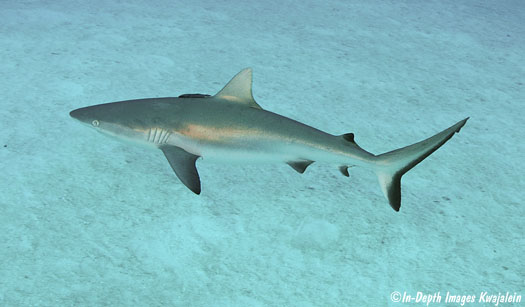
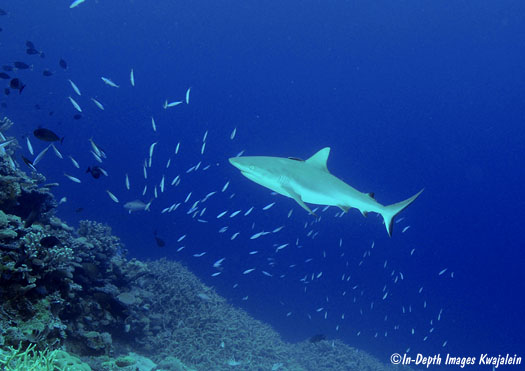
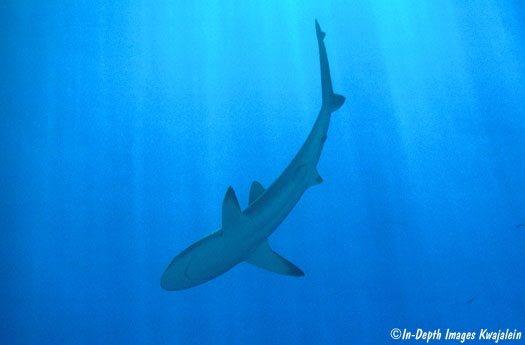
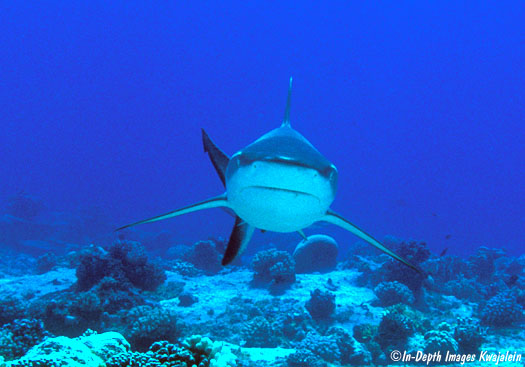
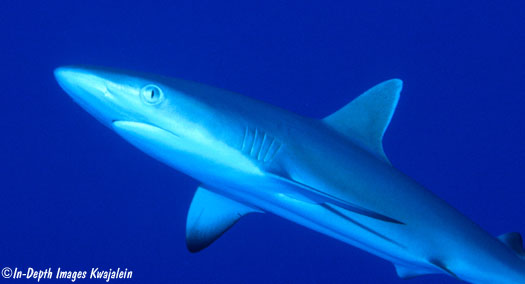
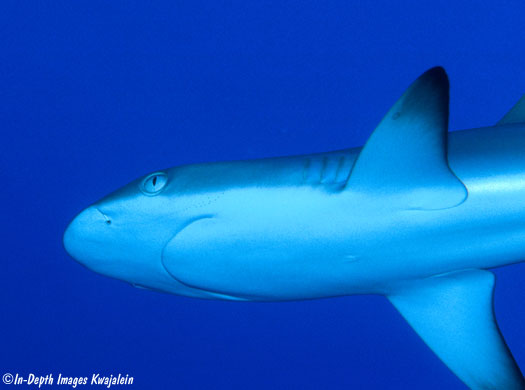
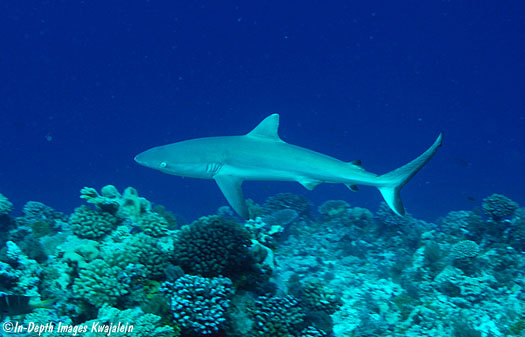
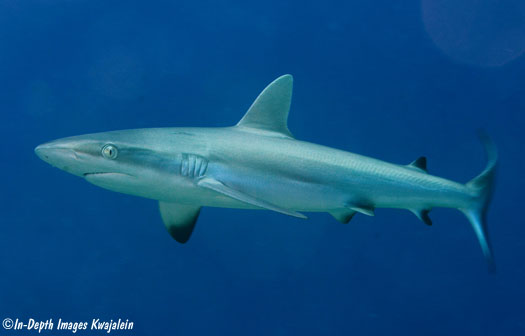
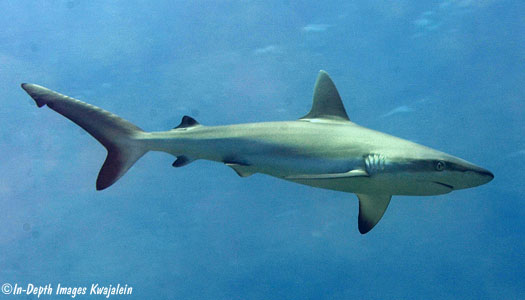
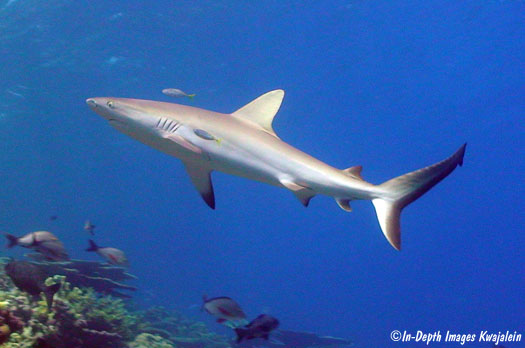
A grey reef posturing, with its pectoral fins pointed down, back arched, and snout bent upward.
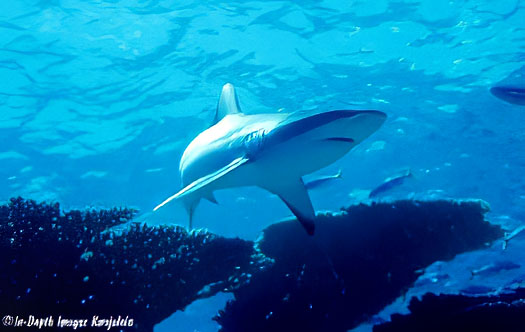
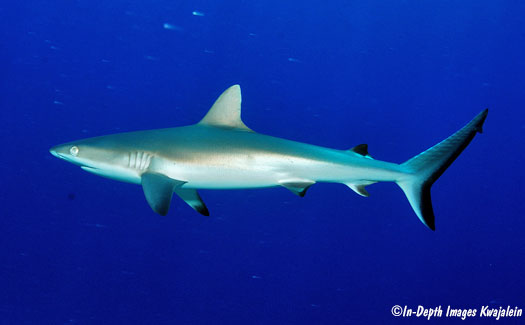
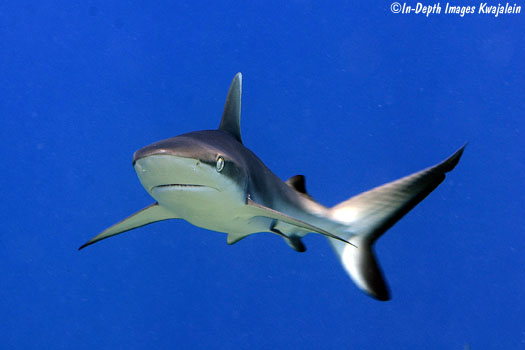
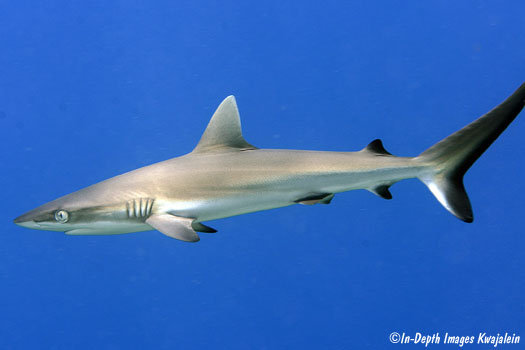
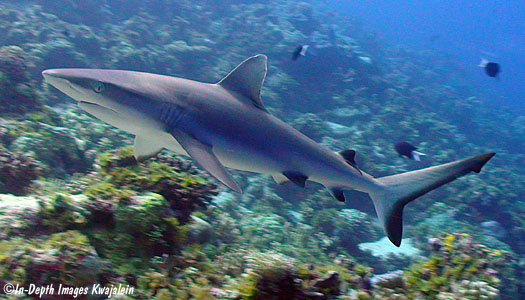
Created 1 October 2013
Updated 5 September 2017